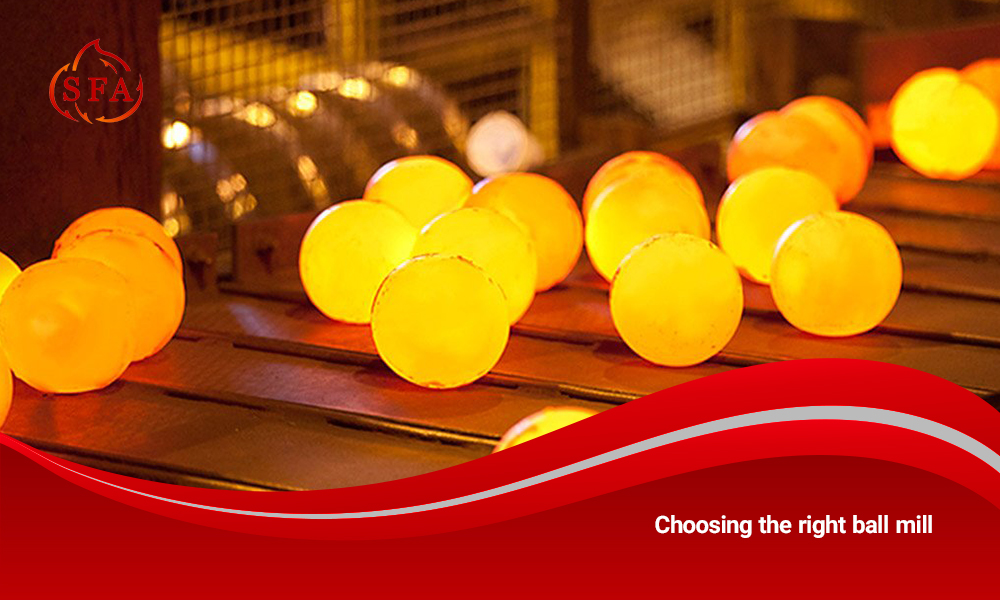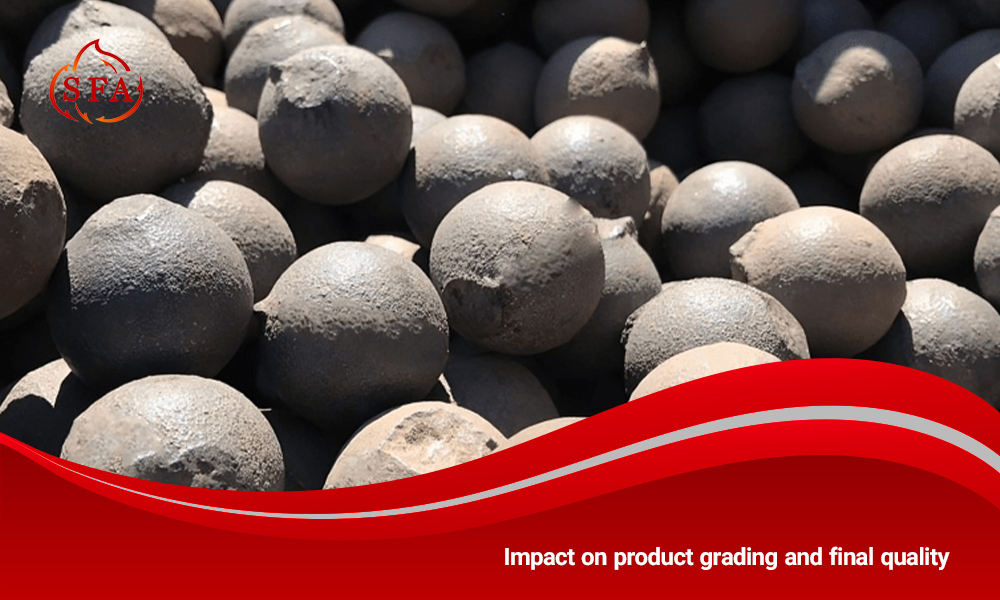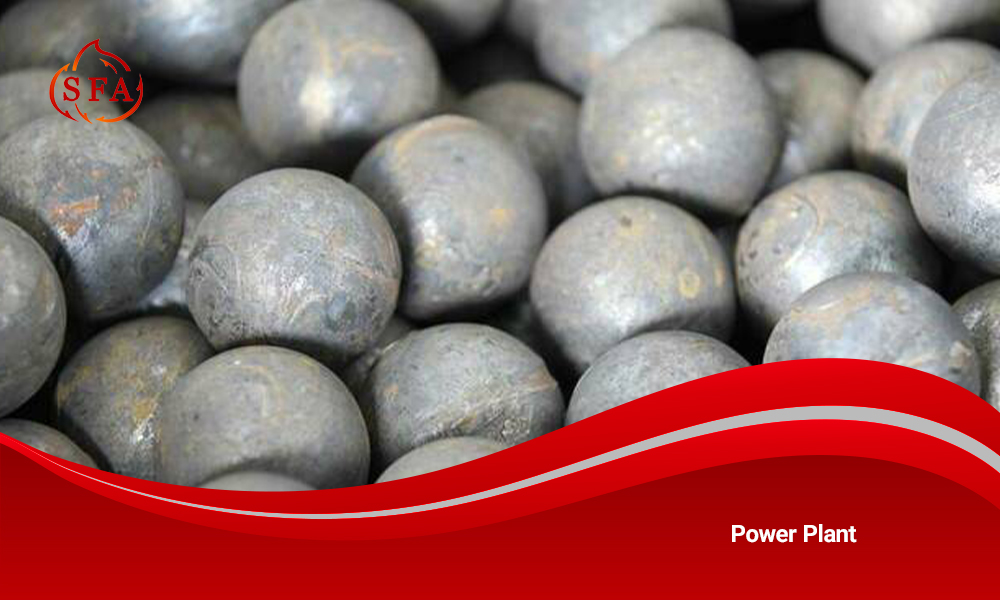

How Proper Grinding Ball Selection Improves Mineral Processing
Ball mill is one of the key equipment in crushing and pulverizing minerals, cement and other industrial materials. Steel or ceramic balls inside the mill grind minerals through impact and abrasion. The mill directly affects the quality and efficiency of this process, as ball mill operations account for about half of the energy consumption in mineral processing plants. Studies show that optimally selecting grinding media reduces energy use and waste, increases production efficiency, and improves particle uniformity in the final product. In the rest of this article from Sepahan Foolad Atashgah, the key principles in selecting grinding balls and their impact on important mineral processing parameters will be examined.
The importance of choosing the right grinding balls
Selecting the right grinding balls plays an important role in optimizing mill performance and reducing energy consumption and costs. Grinding balls of different materials, sizes, and distributions perform different functions in the grinding process. Larger balls (due to their greater kinetic energy) are effective in grinding large aggregates, while finer balls with a larger contact surface area increase the grinding power of small particles.
To achieve the best results, operators usually use a combination of different ball sizes in the mill. Large balls grind coarser feed, while smaller balls handle finer feed. Studies also show that balls with high hardness and density convert input energy into effective grinding, minimize wear, and last longer. In other words, choosing the right ball mill—selecting balls with the proper hardness, density, and toughness for the process—reduces energy consumption and increases efficiency.
Impact on grinding efficiency and energy consumption
One of the main effects of choosing the right ball is to increase grinding efficiency and reduce energy consumption. Research shows that choosing the right ball size and material can significantly reduce mill energy consumption. Experiments indicate that using larger-diameter balls cuts energy use by 24–31% compared to smaller balls. Additionally, using high-chromium balls with high wear resistance and maintaining the proper size distribution for longer periods reduces the need for frequent ball replacement and further lowers energy consumption.
In addition, the optimal size distribution of the balls can prevent over-grinding and unnecessary crushing; in that small balls prevent excessive crushing of particles and reduce energy loss. In practice, the use of high-quality media and the correct combination of sizes allows a greater portion of the mill’s energy consumption to be spent on effective particle crushing, significantly reducing energy consumption per ton of product.


Impact on product grading and final quality
The choice of grinding balls not only affects energy savings, but also the quality of the final product. Larger balls produce coarser particles, while smaller balls produce finer particle separation. For example, one study showed that a mixed ball charge containing 60 and 80 mm sizes produced 4% smaller (finer) particles than when only 80 mm balls were used. Therefore, by adjusting the size ratio, the desired and more uniform particle size can be achieved.
In addition, the surface and chemical properties of the balls are also important; media with a smooth, impurity-free surface will provide a product with higher purity. As noted in industry sources, “the characteristics of the grinding ball affect the final particle size distribution and product purity, and the correct selection of balls can help achieve more uniform product quality specifications. Additionally, using smooth, regular media helps the balls move more smoothly through the mill and grind particles more evenly. Overall, choosing the right balls will result in a more uniform and higher quality end product, whether it be ore, cement, or metals.
Reduce operating costs and extend equipment life
Selecting the right grinding balls significantly reduces operating costs. Each year, a large portion of a ball mill’s expenses goes toward ball replacement; for example, studies show that about 37% of operating costs result from replacing worn balls. When the balls are of poor quality or unsuitable, they wear out faster, which increases replacement frequency and causes more maintenance shutdowns. In contrast, durable and wear-resistant balls last longer and require fewer replacements. If the balls are of poor quality or unsuitable, their wear increases and the frequency of replacement and maintenance shutdowns will increase. In contrast, durable and wear-resistant balls have a longer life and require less replacement.
This reduces the costs of frequently purchasing balls and the manpower and energy needed to shut down and restart the mill. According to technical sources, high-quality balls retain their shape and hardness, last longer, and significantly lower media consumption and inventory costs. Using the right balls also extends the life of the mill’s inner lining (liner) because hard balls resist breaking or deforming and cause less wear on the linings.. Overall, investing in high-quality balls, although more expensive upfront, results in significantly lower operating costs, reduced downtime, and reduced maintenance. For example, one industry study found that using high-quality balls resulted in over 50% reduction in media consumption, over 15% energy savings, and a 30% reduction in downtime over a year.
Application in various industries
The correct selection of grinding balls is of particular importance in various industrial applications. Some examples are:
Mining industries
In metal mines such as copper and gold, using balls with appropriate properties increases grinding efficiency and reduces energy consumption. For example, studies show that replacing ordinary balls with high-chromium balls in these grinding circuits cuts energy use by up to 15%.
Cement industries
Cement mills used to pulverize clinker benefit from high-quality balls. In cement factories, using high-chromium balls produces more uniform cement powder and reduces energy consumption by 8–10%.
Metal and steel industries
Ball mills are used in some metal processing units (such as making metal powder or crushing concentrates). Choosing the right ball in these industries also leads to greater grinding efficiency and reduced equipment wear.
Power Plant (Coal-Fired)
Coal-fired thermal power plants use ball mills to pulverize coal. In these applications, increasing the efficiency of the mill and reducing energy consumption is also of great importance. As mentioned in industrial sources. In industrial milling operations (mining, cement and power plants), the quality of the mill balls plays a decisive role in efficiency and energy consumption.


Providing the best grinding balls with Sepahan Foolad Atashgah
Sepahan Foolad Atashgah is a reputable company that manufactures mill balls and industrial parts. It has earned a strong position in various industries through innovation and high quality. Using modern technology and precise quality control, the company produces durable products that increase efficiency and reduce energy consumption in grinding processes.
The scope of Sepahan Foolad Atashgah’s activities is not limited to production; rather, the company’s experts and CEO help the mining, cement, metal and power plant industries to improve their productivity by providing technical knowledge and practical solutions. The distinctive feature of this company’s products is their high abrasion resistance and optimal design, which reduce maintenance costs and extend equipment life. In recent years, Sepahan Foolad Atashgah has become a well-known and reliable brand by earning customer trust and focusing on sustainable quality.
Conclusion
Choosing the right ball mill is one of the key factors for optimizing the grinding process in various industries. Using the right balls with the optimal size, material, and composition increases production efficiency, reduces energy consumption, and improves product uniformity. High-quality grinding balls also reduce consumable use and maintenance costs and extend the life of equipment such as the balls and the mill’s internal lining. This choice impacts the mining, cement, metals, and power plant industries. By selecting balls designed for each specific application, companies maximize productivity, save costs, and ensure sustainable production. Ultimately, this demonstrates the importance of choosing the right ball mill to achieve the most efficient mineral and industrial grinding processes. You can contact the experts at Sepahan Foolad Atashgah to obtain the best grinding balls.


